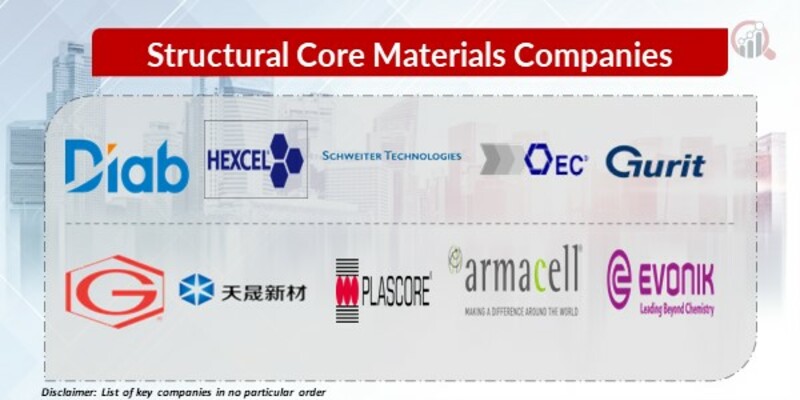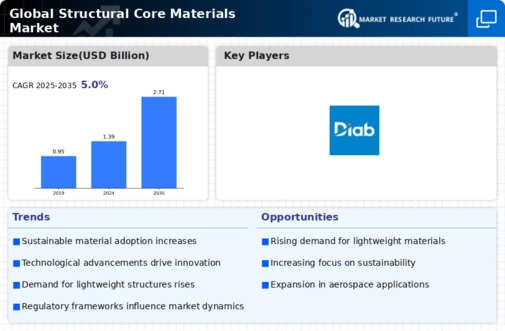Top Industry Leaders in the Structural Core Materials Market
 The structural core materials market plays a crucial role in lightweighting and strengthening various structures across industries. From wind turbine blades to marine vessels, these materials offer a unique blend of strength, stiffness, and lightweight properties. However, navigating this competitive landscape requires understanding the key players, their strategies, and the factors that influence market share.
The structural core materials market plays a crucial role in lightweighting and strengthening various structures across industries. From wind turbine blades to marine vessels, these materials offer a unique blend of strength, stiffness, and lightweight properties. However, navigating this competitive landscape requires understanding the key players, their strategies, and the factors that influence market share.
Market Leaders and Strategies:
-
Global giants: Hexcel, Diab Group, Evonik, and Owens Corning dominate the market with their established brands, diverse product portfolios, and strong global presence. They focus on continuous R&D, strategic acquisitions, and vertical integration to maintain their edge. -
Regional players: Companies like The Gill Corporation, Plascore, and CoreLite cater to specific regional demands and offer customized solutions. They leverage their agility and cost-effectiveness to compete in niche markets. -
Emerging players: Startups like Core Composites and Centex are disrupting the market with innovative materials like bio-based composites and recycled foams. Their focus on sustainability and cost-efficiency attracts environmentally conscious customers.
Factors Influencing Market Share:
-
Material type: Different applications require specific core materials. Honeycomb, foam, and balsa wood each offer unique advantages and disadvantages, impacting their market share. -
Industry trends: The growing demand for lightweight and fuel-efficient vehicles, coupled with the increasing adoption of renewable energy, drives the market for structural core materials. -
Technological advancements: Development of new manufacturing techniques, like 3D printing and automated fiber placement, reduces production costs and opens up new application possibilities. -
Sustainability: Environmental concerns are pushing manufacturers towards sustainable materials, like bio-based composites and recycled foams, creating new market opportunities. -
Regulations: Stringent safety and performance regulations in industries like aerospace and marine influence the choice of core materials and impact market dynamics.
Key Players
- Diab Group
- Hexcel Corporation
- Schweiter Technologies
- Euro Composites
- Gurit Holding
- The Gill Corporation
- Changzhou Tiansheng New Materials Co. Ltd.
- Plascore Incorporated
- Armacell International
- Evonik Industries
Recent Developments:
-
August 2023: Owens Corning partners with a leading boat manufacturer to develop new lightweight and fuel-efficient boat designs using its core materials. -
September 2023: The Gill Corporation launches a new online configurator tool for customers to design and order custom core material solutions. -
October 2023: Plascore announces the expansion of its manufacturing facility in Europe to meet the growing demand for core materials in the construction industry. -
November 2023: A consortium of leading research institutions and industry players launches a project to develop new recyclable and high-performance core materials. -
December 2023: The European Union announces stricter regulations on the use of certain flame retardants in core materials, impacting the market for some traditional materials.









